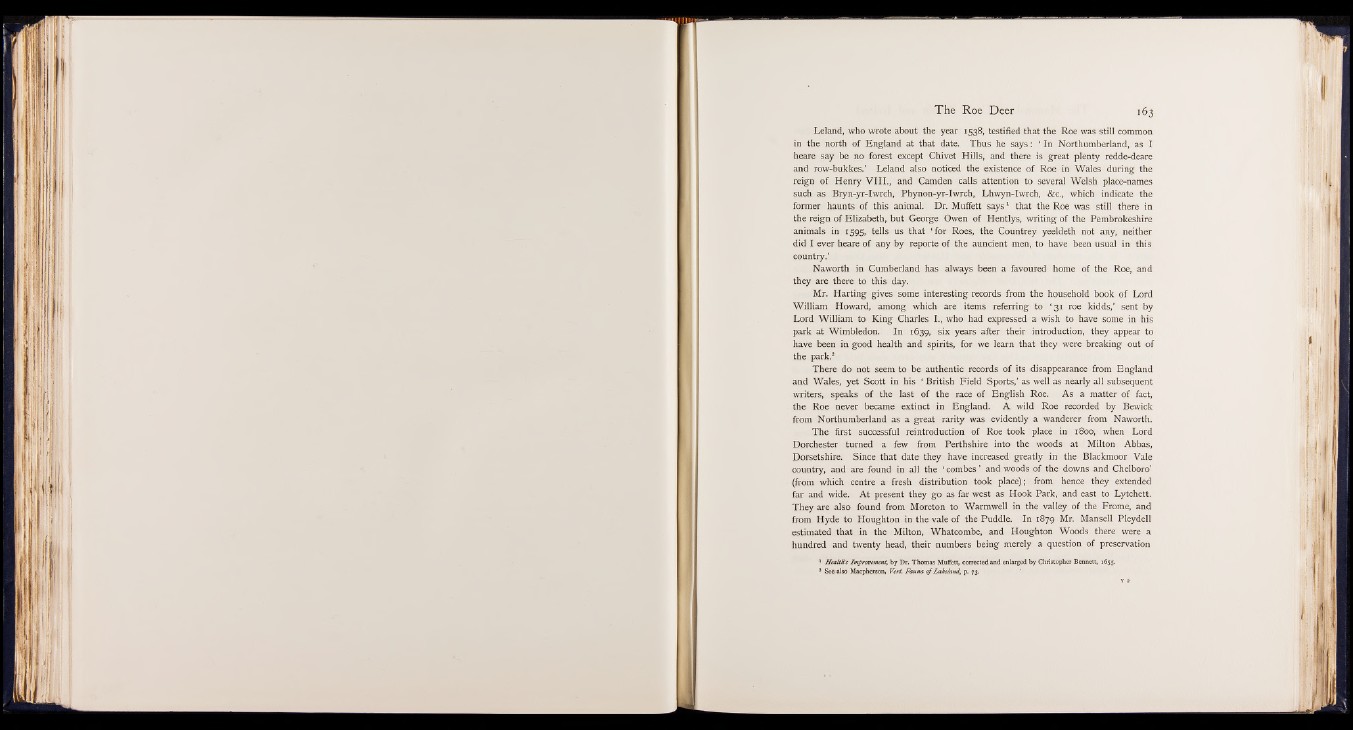
Leland, who wrote about the year 1538, testified that the Roe was still common
in the north of England at that date. Thus he says : ‘ In Northumberland, as I
heare say be no forest except Chivet Hills, and there is great plenty redde-deare
and row-bukkes.’ Leland also noticed the existence of Roe in Wales during the
reign of Henry VIII., and Camden calls attention to several Welsh place-names
such as Bryn-yr-Iwrch, Phynon-yr-Iwrch, Lhwyn-Iwrch, &c., which indicate the
former haunts of this animal. Dr. Muffett says1 that the Roe was still there in
the reign of Elizabeth, but George Owen of Hentlys, writing of the Pembrokeshire
animals in 1595, tells us that ‘ for Roes, the Countrey yeeldeth not any, neither
did I ever heare of any by reporte of the auncient men, to have been usual in this
country.’
Naworth in Cumberland has always been a favoured home of the Roe, and
they are there to this day.
Mr. Harting gives some interesting records from the household book of Lord
William Howard, among which are items referring to ‘ 31 roe kidds,’ sent by
Lord William to King Charles I., who had expressed a wish to have some in his
park at Wimbledon. In 1639, six years after their introduction, they appear to
have been in good health and spirits, for we learn that they were breaking out of
the park.2
There do not seem to be authentic records of its disappearance from England
and Wales, yet Scott in his ‘ British Field Sports,’ as well as nearly all subsequent
writers, speaks of the last of the race of English Roe. As a matter of fact,
the Roe never became extinct in England. A wild Roe recorded by Bewick
from Northumberland as a great rarity was evidently a wanderer from Naworth.
The first successful réintroduction of Roe took place in 1800, when Lord
Dorchester turned a few from Perthshire into the woods at Milton Abbas,
Dorsetshire. Since that date they have increased greatly in the Blackmoor Vale
country, and are found in all the ‘ combes ’ and woods of the downs and Chelboro’
(from which centre a fresh distribution took place); from hence they extended
far and wide. At present they go as far west as Hook Park, and east to Lytchett.
They are also found from Moreton to Warmwell in the valley of the Frome, and
from Hyde to Houghton in the vale of the Puddle. In 1879 Mr. Mansell Pleydell
estimated that in the Milton, Whatcombe, and Houghton Woods there were a
hundred and twenty head, their numbers being merely a question of preservation
1 Health!s Improvement, by Dr. Thomas Muffett, corrected and enlarged by Christopher Bennett, 1655.
3 See also Macpherson, Vert. Fauna o f Lakeland, p. 73.